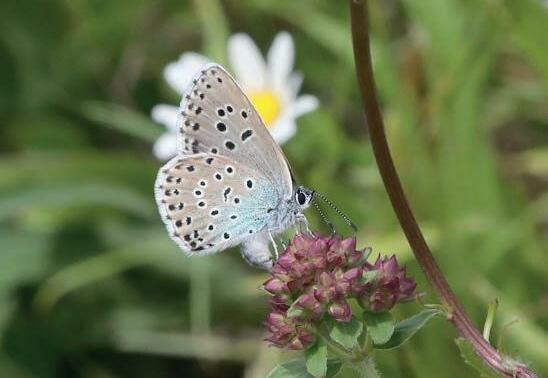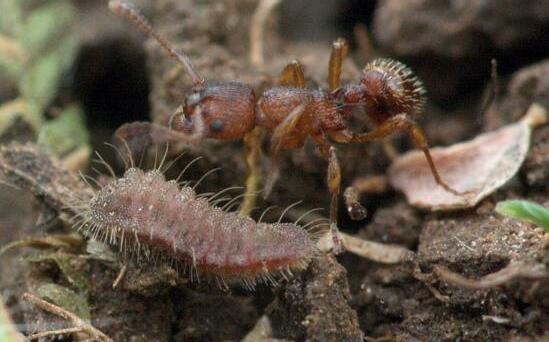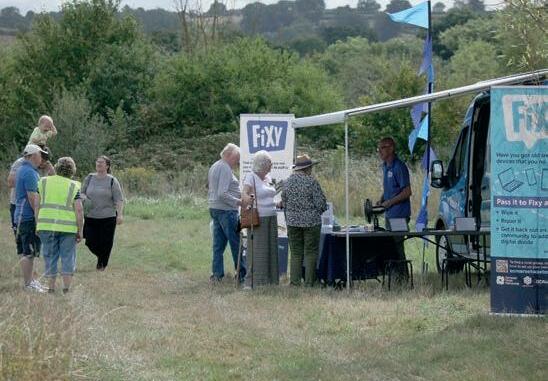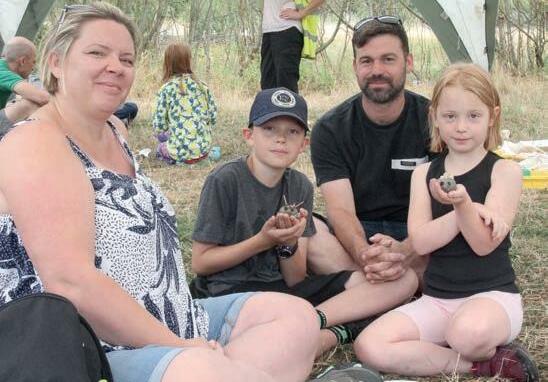
8 minute read
Environment
Somerset Wildlife Trust fund appeal
SOMERSETWildlife Trust has launched its annual Nature Reserves Fund appeal. First launched in 2016, this fund enables the trust to care for and maintain its nature reserves, which are some of Somerset’s most important sites for wildlife.
The fund has raised over £160,000 since it was first established, all of which has been put towards the care and protection of its 68 reserves, spread across Somerset, which include areas of ancient woodland, flower-rich meadows, and precious wetland.
The trust estimates that it is currently costing £2,600 a day to maintain them – and this is even with the help of many committed and skilled volunteers working on site.
Since the Nature Reserves Fund was established in 2016, it says agri-environment funding has decreased by almost 25%, and while the trust received £470k in grants last year, it needed to spend £866k on the reserves’ management and preservation – leaving a gap of £396k.
This year, with the costs of equipment, fuel, and materials increasing at the fastest rate in 40 years, the charity is depending on the fund to help fill the gap in its funding and ensure that it will be able to continue looking after these very special sites that so many species rely on.
Rachael Fickweiler, Head of Nature Reserves at Somerset Wildlife Trust, said: “We know that things are difficult for people financially at the moment, but we ask that people give what they can to ensure we can all continue to connect to and value these special places long into the future.
“Every donation made to the Nature Reserves Fund makes a crucial difference to our ability to maintain these special sites, which are not only beautiful places but most importantly safeguard a significant range of rare plants and animals.”
Details: https://www.somersetwildlife.org/appeals/naturereserves-fund or call Zoe 01823 652429
Future energy
A SERIESof workshops are being held across North East Somerset to consider future possible renewable energy projects.
They are being held in Stowey Sutton, East Harptree, West Harptree, Bishop Sutton, Peasedown St John, Wellow, Hinton Blewett and Temple Cloud.
Potential projects will include onshore wind, solar, hydro, heat pumps and anaerobic digestion. The workshops will be run by the Centre for Sustainable Energy on behalf of Bath and North East Somerset Council.
Woodland creation grants
WOODLANDS can provide people and communities with a wealth of social, economic and environmental benefits from flood alleviation and habitat for native wildlife to improving mental and physical health.
Woodlands can also provide alternative sources of income for farmers and landowners. Timber, wood fuel and carbon credits, as well as recreation and tourism, can generate additional revenue.
England’s Woodland Creation Offer, is a grant that supports the establishment of new woodlands and is administered by the Forestry Commission. It’s available to local authorities, as well as private landowners.
We know that woodland creation has multiple benefits for farmers and landowners as well as the local community.
The scheme offers one-off payments up to £8,500 per hectare as well as ongoing maintenance payments of £300 per annum for ten years. In addition to this you can receive additional one-off payments for delivering benefits, such as flood management and improving biodiversity.
Alex Underwood Woodland Officer and Tree Health Champion
Details: swwoodlandcreation@forestrycommission.gov.uk
Cycle to work
SOMER Valley GPs will be able to prescribe walking and cycling in an innovative new trial aimed at boosting health and wellbeing through active travel.
The pilot scheme will operate in Midsomer Norton, Paulton, Radstock and Westfield, with the option to expand further across the Three Valleys Primary Care Network area.
The scheme proposes to develop a “walking and cycling hub” in Radstock, offering a one-stop shop for walking and cycling support, activities, cycle hire, cycle repair and information on active travel routes.
There will also be regular pop-up hubs in high street locations in Midsomer Norton, Paulton and Westfield. The scheme will operate through a referral process, accepting referrals from various routes including health professionals, community services and selfreferral.
Bath & North East Somerset Council has been awarded £1.5 million for the scheme from the Department for Transport, following a successful bid by the council and supported by the West of England Combined Authority.
Large blues back from extinction


LARGE blue butterflies are now breeding at their highest levels for 150 years, thanks to conservation projects pioneered in Somerset.
Rare insects and plants are also thriving on the restored grassland sites. Plants benefitting include Pasqueflower, Cutleaved Selfheal, and 12 species of native orchid.
Rare insects include Rugged oil beetle, Rock-rose pot beetle, Shrill carder bumblebee, Downland villa and Spotted beeflies, and eight Red data book species of butterfly, including Duke of Burgundy, currently one of the UK’s most endangered butterflies.
The once-extinct large blue butterfly was reintroduced to the UK in 1983. Thanks to meticulous conservation management by a partnership of scientists and conservation bodies, South West England now supports the greatest concentration of large blues known in the world.
The 12 current sites link or extend more established populations spanning two landscapes in mid-Somerset and, more recently, in the Cotswold Hills.
The sites are managed, owned or administered by six partner organisations – National Trust, Somerset and Gloucestershire Wildlife Trusts, J & F Clark Trust, Natural England, and Oxford University.
The restorations are led, supervised and monitored by the Royal Entomological Society’s David Simcox and Sarah Meredith, who also designed the bespoke management plan needed for each site.
Prof Jeremy Thomas, Emeritus Professor of Ecology, University of Oxford and chair of the Joint Committee for the Reestablishment of the Large Blue Butterfly, said: “The unprecedented success of this project is testimony to what large scale collaboration between conservationists, scientists and volunteers can achieve.
“It’s greatest legacy is that it demonstrates that we can reverse the decline of globally-threatened species once we understand the driving factors.
“The greatest challenge ahead is to secure this expansion in a warming climate and to develop strategies to mitigate the impacts of extreme weather events.”
The large blue has a bizarre life cycle. Having fed for three weeks on the flowers of wild thyme or marjoram, the caterpillar produces scents and songs that trick red ants into believing it is one of their own grubs and is carried underground into the ant nest and placed with the brood.
The caterpillar spends the next ten months feeding on ant grubs before pupating in the nest the following year, then emerging to crawl above ground as a butterfly.

The caterpillars are adopted by ants Large blue laying eggs on one of the sites in Somerset
Ten-year plan for footpaths in North Somerset
CONSULTATION has opened to gauge people’s views about how to improve the public rights of way network in the North Somerset Council area.
The council’s current draft ten-year plan proposes five key objectives, to be delivered by 31 actions. People are invited to have their say on: l What their priorities are for the PRoW network, l What they would like from the service, and l How walking, equestrian and cycling opportunities for all can be improved.
The council is also seeking feedback from organisations including The Ramblers’ Association, Bridleways and Access North Somerset, Mendip Hills Area of Outstanding Natural Beauty and Sustrans as well as town and parish councils.
The responses received from the consultation will help finalise an improvement plan to be considered by the council’s executive in December.
Councillor Mike Solomon, North Somerset Council's executive member for neighbourhoods and community services, said: “We want our Public Rights of Way network to be connected, accessible and well-maintained. It’s crucial that we plan to meet not only current but future needs of users.
“I encourage people to get involved and tell us what they would like to see. Their views will really make a difference and help us to shape the way we deliver the service.”
The consultation ends on Friday, October 7th.
Open day at environment centre
AN environmental education and conservation charity based on a former landfill site near Castle Cary welcomed visitors to its first open day in several years.
Carymoor Environmental Trust’s 100-acre site at Dimmer is usually open only to pre-booked groups such as schools and community groups.
The trust was set up in 1996 by a small group of enthusiasts and carries out pioneering land restoration and habitat creation work on the capped landfill site alongside a working waste operation. Working with experts and volunteers, the trust has created a nature reserve with an extensive range of habitats.
Visitors to the open day were allowed to explore the site –which features a traditional roundhouse and volunteer centre built of straw bales – and meet volunteers showcasing a range of skills from scything meadows to bird ringing along with guided walks and displays.

Neil Gemmell teaches centre volunteer Tom Hunt how to use an Austrian scythe on Otton’s Meadow


The Fixy Van where old technology can be handed in to be recycled Preparing to leave the centre for a guided walk on the capped landfill site


The Jarrett family, from Wells, in the children’s activity area with some imaginary animals made from clay and found material
Volunteer John Peppard, of Shepton Mallet, demonstrating bowl carving using a range of knives









